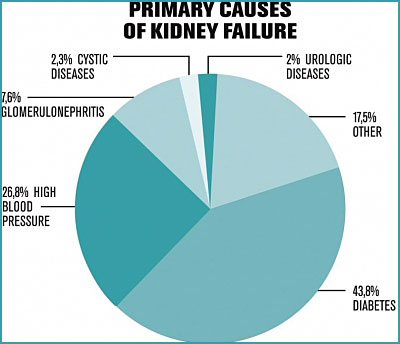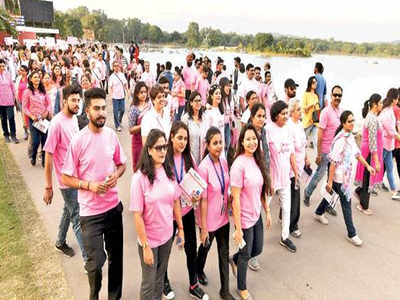New Delhi| HLive Correspondent
Chronic Kidney Disease is becoming silent killer for the people of our country. There is continuous increasing in the number of patients having suffered from this disease.
According to the experts there has been rise of about ten percent in the number of people undergoing dialysis. It is found that in last fifteen years number of kidney failure cases has increased two times..
According to them, several Indian population-based studies in the past estimated the incidence of End-Stage Kidney Disease (ESKD) is 150-230 per million and about 220,000-275,000 new patients need Renal Replacement Therapy (RRT) every year.
“It is estimated that approximately 75,000 patients are on dialysis which is growing at the rate of 10-20 percent annually. The question is whether India has the resources and skill to handle this ever-increasing population of ESKD in India,” said Dr Rajesh Kumar, consultant nephrologist at Mumbai-based SRV Hospital.
Stating that the exact burden of chronic kidney diseases in India is still undefined, the approximate prevalence of CKD is 800 per million populations (pmp).
As experts said, one percent of the Gross Domestic Product (GDP) in India is spent on the health sector while the figure in China is three percent and 8.3 percent in the US.
Earlier figures have shown that 65 percent diagnosed patients do not receive dialysis and medical treatment on time.
“Looking at these facts, it is a challenge to cope up with an ever-increasing ESKD population who require Renal Replacement therapy (RRT) in the form of Hemodialysis, Continuous Ambulatory Peritoneal Dialysis or Kidney Transplantation. Hence a sincere and serious attempt is necessary to bring down the cost of dialysis treatment,” Dr Kumar said.
According to Dr Pradeep Gadge, a diabeteologist with Seven Hills and Breach Candy Hospitals in Mumbai, diabetes is considered as the most common causes for kidney failures and it is estimated that over one million patients worldwide are alive on dialysis.
“With this exponential increase in diabetic patients in India, the number of patients with kidney ailments is likely to rise high,” he noted, adding that every year, an estimated 3.5-4 lakh new cases are likely to be diagnosed with kidney ailments.
“Diabetes and blood pressure are most common cause of kidney disease in adults but in children, Chronic glomerulonephritis and Recurrent UTI (Reflux) are the most important causes apart from congenital anomalies of urinary system,” Dr Gadge said.
Throwing light on the facilities for dialysis, Dr M.M. Bahadur, nephrologist at Wockhardt Hospital, said: “Two lakh patients in a year reach the CAPD (Continuous Ambulatory Peritoneal Dialysis) stage 5 where they need dialysis of which less than 10 percent actually get treated due to non-availability of facility, cost factor and proximity.”
Continuous Ambulatory Peritoneal Dialysis means diaysis throughout the day, at home or at work. During CAPD, a bag of dialysis fluid is drained into the peritoneal cavity through a Tenckhoff Catheter.
“With only 300-400 dialysis centres available in India and with 1,500 nephrologist in metro cities who treat kidney patients, more than 60 percent of the patients do not receive medical attention on time. Only four percent of the patients get donors,” noted Dr Bahadur.
According to the health ministry, 2,000 new dialysis centres will be set up at district-level hospitals in the country within the next two years to tackle the problem.










